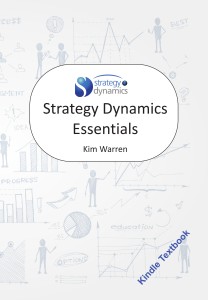Kim Warren on Strategy
Strategy insights and living business models
There's much more to 'strategy' than the business plan (A)
I got challenged for my claim that the issues in this figure are all unavoidably parts of managing strategy. Strategy, they say, is only about Formulation and creating…
Planning and managing Net Zero programs
Small and medium enterprises (SMEs) account for a large fraction of greenhouse-gas emissions (GHGs) from the business sector. But although most SMEs undoubtedly want to “do the right thing”…
Ockham's Razor - the simplest answer is often best
I recently explained the limitations of hypothesis-testing for strategic planning and problem-solving, and the advantages of abductive reasoning as more efficient and reliable method (keep asking “What directly…
Abductive strategy building - beats hypothesis-testing
My last post noted that hypothesis-testing is recommended as a scientific and efficient method for developing strategy – or maybe figuring out what’s going wrong. But that post…
Hypothesis-driven strategy building - we can do better
A few times in the past, experienced consultants have told me how they use a “hypothesis-driven” approach to figure out strategy recommendations for clients. In summary, this means…
The rigorous modeling process follows the Pyramid Principle
My last post “Get buy-in with the Pyramid Principle” explained a process to win support for important conclusions or recommendations … start with the key recommendation, or issue…
Get buy-in with the Pyramid Principle
You maybe never made this mistake, but I sure did … As a junior planning analyst and consultant, when it came to presenting my findings and recommendations, I…
McKinsey and the strategic CFO
McKinsey reports on the increasingly strategic role that CFOs, but that needs dynamic business models.
Process models -v- dynamic models - related but different
Most executives probably think of “process models” to capture how a business works. These descriptive models lay out what is done to the things in the system. Dynamic models, define and quantify those things themselves, and show how their scale changes over time – with considerable benefits over proce3ss models.
How dynamic business models can enhance Enterprise Architectures for information-systems planning
“Enterprise Architectures” (EAs) have long provided a solid basis for developing organizations’ IT strategies and plans.
BUT, the business architectures on which the whole EA effort depends are typically descriptive and qualitative. Dynamic business models, in contrast, are quantified, working “digital twins” that play out how the business actually functions.
dynamic business models can add a stronger foundation for EA efforts.

